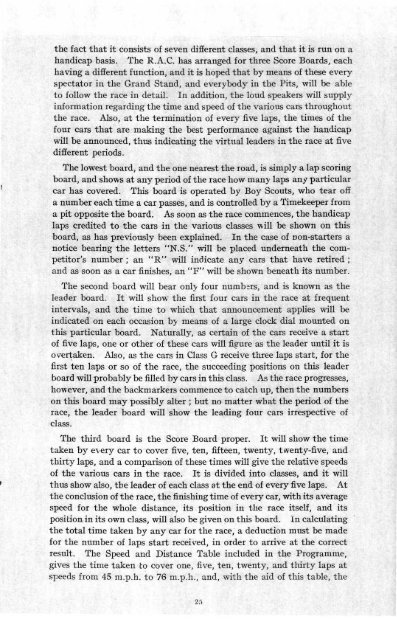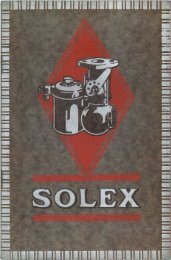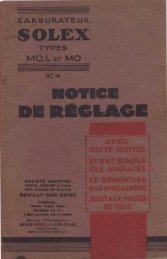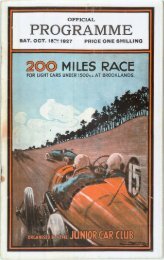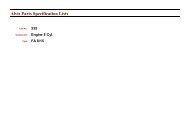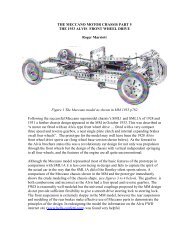You also want an ePaper? Increase the reach of your titles
YUMPU automatically turns print PDFs into web optimized ePapers that Google loves.
the fact that it consists of seven different classes, and that it is run on a<br />
handicap basis . The R.A .C. has arranged for three Score Boards, each<br />
having a different function, and it is hoped that by means of these every<br />
spectator in. the Grand Stand, and everybody in the Pits, will be able<br />
to follow the race in detail . In addition, the loud speakers will supply<br />
information regarding the time and speed of the various cars throughout<br />
the race . Also, at the termination of every five laps, the times of the<br />
four cars that are making the best performance against the handicap<br />
will be announced, thus indicating the virtual leaders in the race at five<br />
different periods.<br />
The lowest board, and the one nearest the road, is simply a lap scoring<br />
board, and shows at any period of the race how many laps any particular<br />
car has covered . This board is operated by Boy Scouts, who tear off<br />
a number each time a car passes, and is controlled by a Timekeeper from<br />
a pit opposite the board . As soon as the race commences, the handicap<br />
laps credited to the cars in the various classes will be shown on this<br />
board, as has previously been explained . In the case of non-starters a<br />
notice bearing the letters "N .S." will be placed underneath the com-<br />
petitor's number ; an "R" will indicate any cars that have retired ;<br />
and as soon as a car finishes, an "F" will be shown beneath its number.<br />
The second board will bear only four numbers, and is known as the<br />
leader board . It will show the first four cars in the race at frequent<br />
intervals, and the time to which that announcement applies will be<br />
indicated on each occasion by means of a large clock dial mounted on<br />
this particular board . Naturally, as certain of the cars receive a start<br />
of five laps, one or other of these cars will figure as the leader until it is<br />
overtaken . Also, as the cars in Class G receive three laps start, for the<br />
first ten laps or so of the race, the succeeding positions on this leader<br />
board will probably be filled by cars in this class . As the race progresses,<br />
however, and the backmarkers commence to catch up, then the numbers<br />
on this board may possibly alter ; but no matter what the period of the<br />
race, the leader board will show the leading four cars irrespective of<br />
class.<br />
The third board is the Score Board proper . It will show the time<br />
taken by eery car to cover five, ten, fifteen, twenty, twenty-five, and<br />
thirty laps, and a comparison of these times will give the relative speeds<br />
of the various cars in the race . It is divided into classes, and it will<br />
thus show also, the leader of each class at the end of every five laps . At<br />
the conclusion of the race, the finishing time of every car, with its average<br />
speed for the whole distance, its position in the race itself, and its<br />
position in its own class, will also be given on this board . In calculating<br />
the total time taken by any car for the race, a deduction must be made<br />
for the number of laps start received, in order to arrive at the correct<br />
result. The Speed and Distance Table included in the <strong>Programme</strong>,<br />
gives the time taken to cover one, five, ten, twenty, and thirty laps at<br />
speeds from 45 m .p .h. to 76 m .p .h ., and, with the aid of this table, the<br />
25


